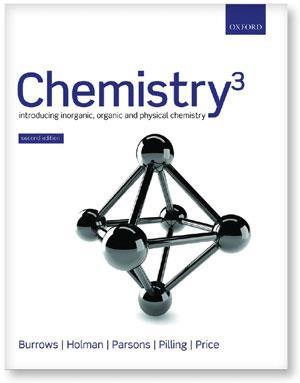This book introduces the three traditional areas of inorganic, organic and physical chemistry. It is aimed at those in the first year of UK university chemistry courses.
Andrew Burrows et al
Oxford University Press
2013 | 1440pp | £46.99 (PB)
ISBN 9780199691852

This book introduces the three traditional areas of inorganic, organic and physical chemistry. It is aimed at those in the first year of UK university chemistry courses.
The reader is taken through a wide range of topics by a combination of clearly written text, beautiful illustrations and more interactive learning, including problems and screencasts. Two examples where the book gives excellent coverage of areas that students often find difficult are NMR splitting (covered by a very clear diagram showing how splitting relates to the energy levels within the nucleus) and chemical kinetics (the section includes screencasts to explain steady-state and transition state theory).
I like the way that atomic structure is approached in this book, starting with material that all students will understand from A-level chemistry (eg flame tests), but leading through in a logical manner to the Schrödinger equation. It also offers extra material for those who want it, for example on angular wavefunctions (there is a very useful Maths Toolkit at the end of the book for those who lack confidence or understanding in mathematics).
The section on molecular orbitals is very clear, leading to more difficult topics such as s-p mixing and relating back to experiments, showing how photoelectron spectroscopy allows us to determine orbital energies.
I find the descriptive inorganic chemistry sections slightly more disappointing. The chapters on p- and d-block chemistry seem a little superficial and some topics are almost completely ignored. For example, p-block organometallics are only allocated one page. Crystal field theory is covered in the d-block chapter but there is no mention of molecular orbital theory, which some advanced students may want to consider having studied such theory in p-block chemistry. These are not serious criticisms, just a comment on the balance of the book, which I feel is excellent on theory but a little weaker on description.
I would be very happy to recommend this book to my students. It is highly readable and superbly illustrated – the authors are to be commended on their effort.
Purchase Chemistry3at Amazon.co.uk









No comments yet